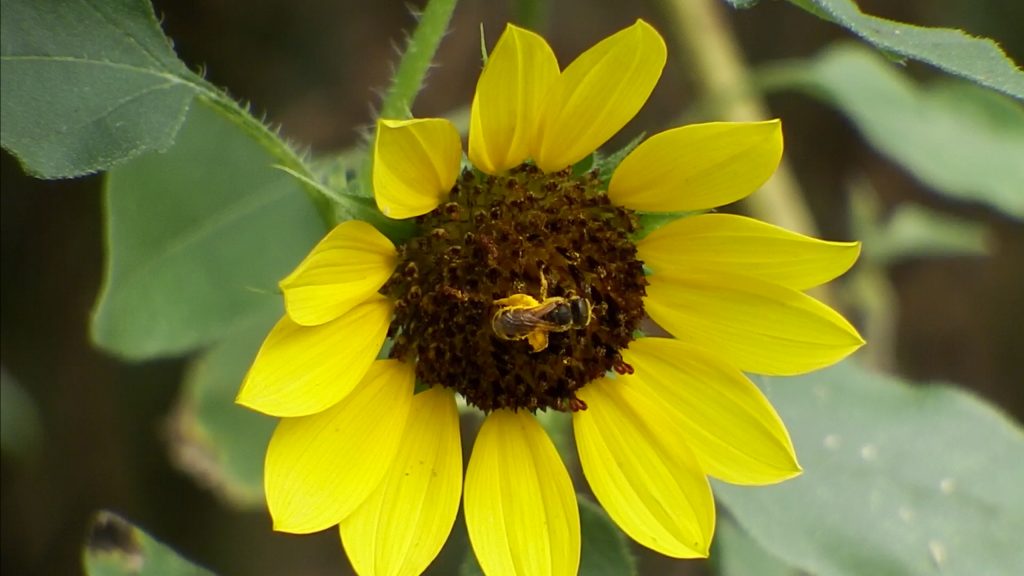Bees and Pollen

We have been taught to think of bees as European honey bees. I don’t have to tell you about them, you learned it in grade school. They make hives. They have a queen. They dance.
But, not all bees are European honey bees. We have 600 species of native bees in Texas and not one of them is a European honey bee. That’s because the honey bee isn’t native. The word “European” was the clue. Fossil records indicate that honey bees were once present in North America, but disappeared and were absent from approximately five million years ago until 1622 when beekeepers finally arrived on our shores.
Even without proper bees, we had a varied and thriving plant community. What we lacked, however, was honey and that was a loss. Only honey bees make honey and store it in quantity. The pollinating thing, however, was just fine. Almost all bees pollinate flowers. They do it inadvertently.
Bees develop a static charge as they fly. So when they land, they are like a balloon that has been rubbed until it is itself statically charged. Things stick to them. Things like grains of pollen. Bees are covered in fine hairs that do most of the pollen collecting. The bee travels from flower to flower looking for nectar to eat and pollen to roll into balls so baby bees have something to eat once they emerge, unattended, from their eggs.
Bees use their legs to gather the pollen that sticks to them. Honey bees push the pollen into a basket near the joint of their hind legs. The mechanics of the basket compress the pollen. You might see a honey bee with what look like saddlebags on its hind legs. That’s pollen headed back to the hive.
Native bees also use their legs to sweep the pollen towards specialized hairs called scopae. On most bees, the scopae are on the hind legs. On leaf-cutter bees, the scopae are on the abdomen.
If you want to do quick bee ID, where the pollen is kept gives you a clue. No pollen on the legs but a yellow belly, leaf cutter. Pollen in a kind of shiny ball on each leg, a honey bee. Lots of pollen on the legs, but not neatly packed into a ball, one of the others!
This is a slow-motion video of one of the others on a common sunflower. There is nothing much to say about it and nothing much happens. It’s just amazing. It’s even more amazing if you watch it full screen.

